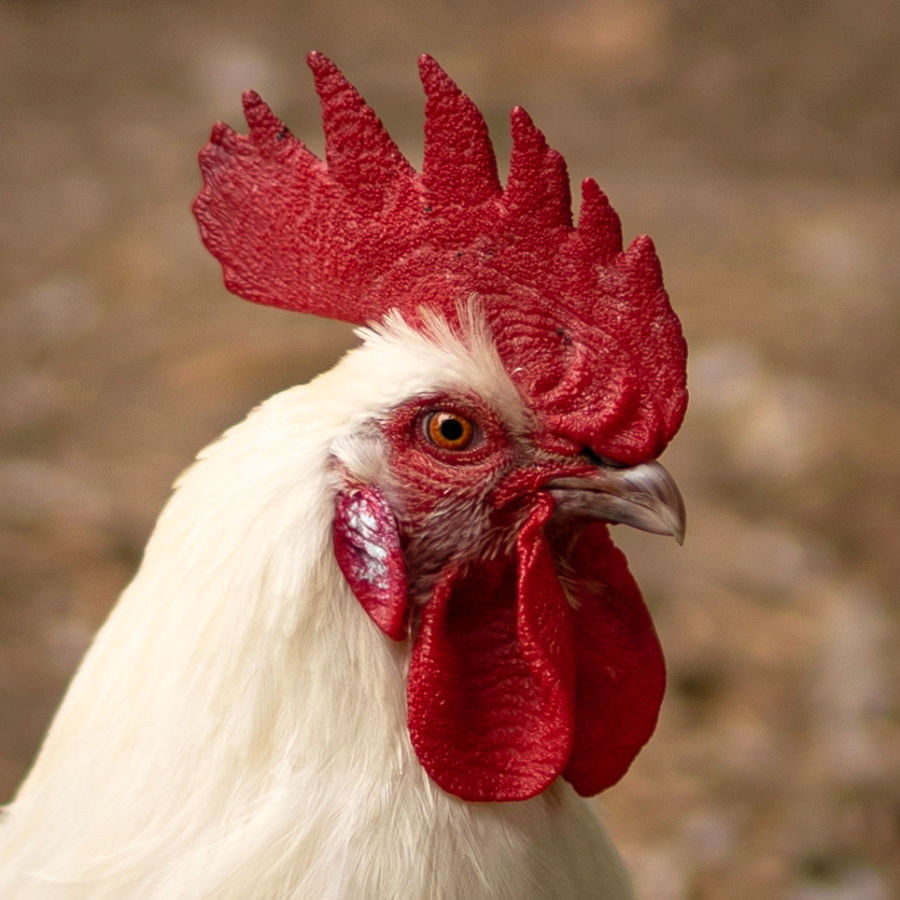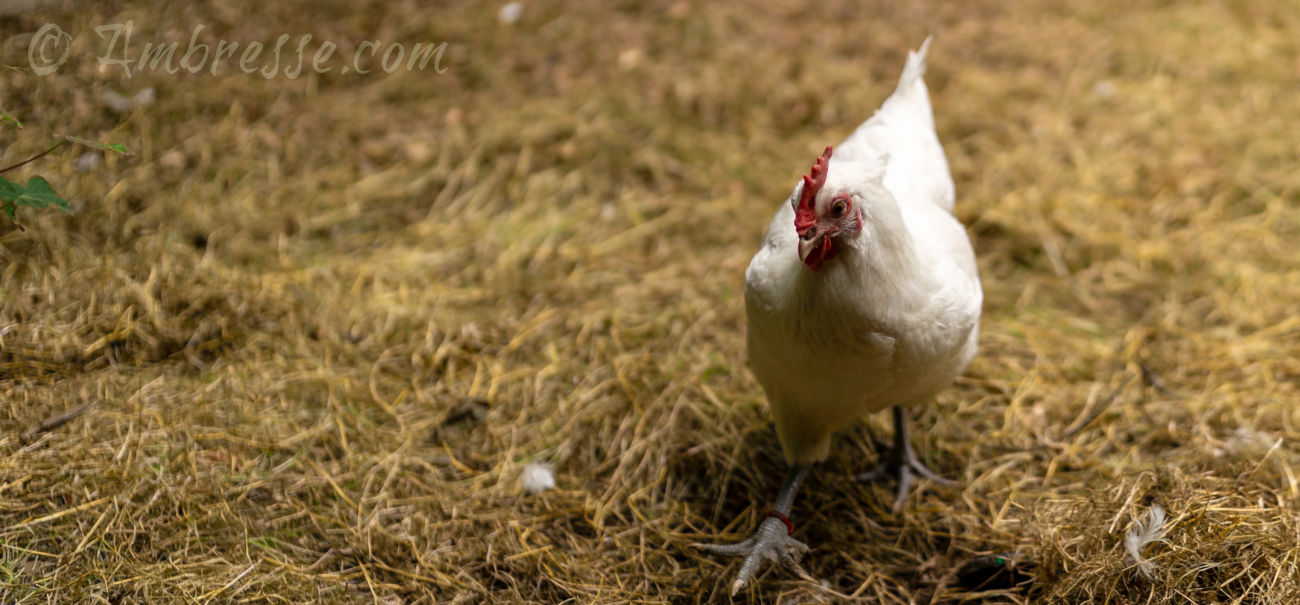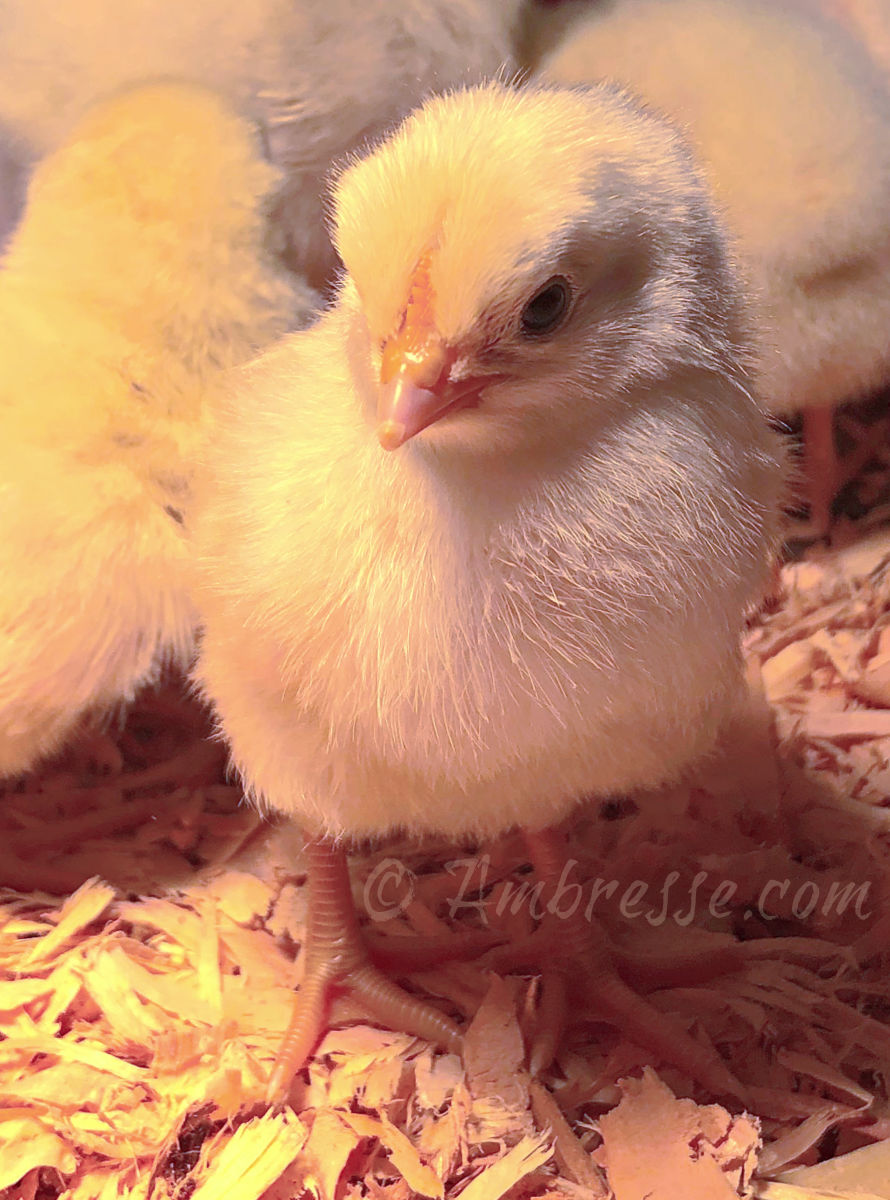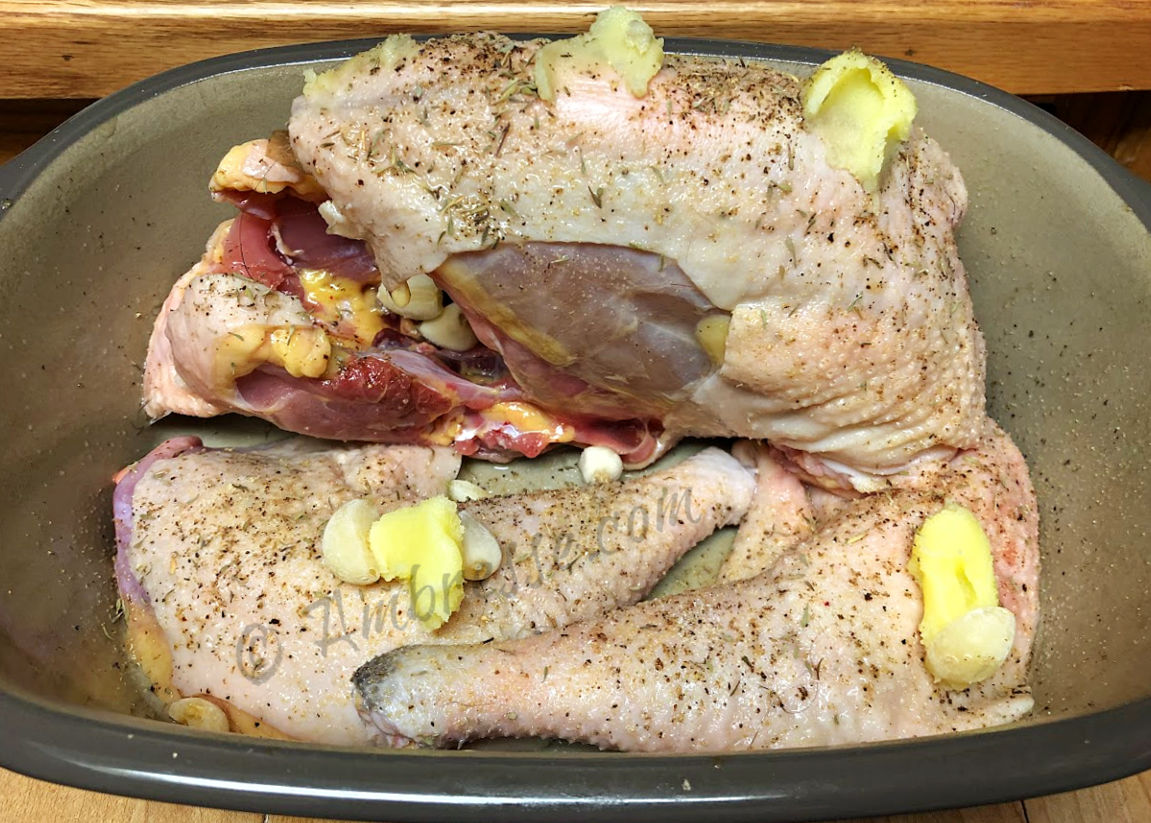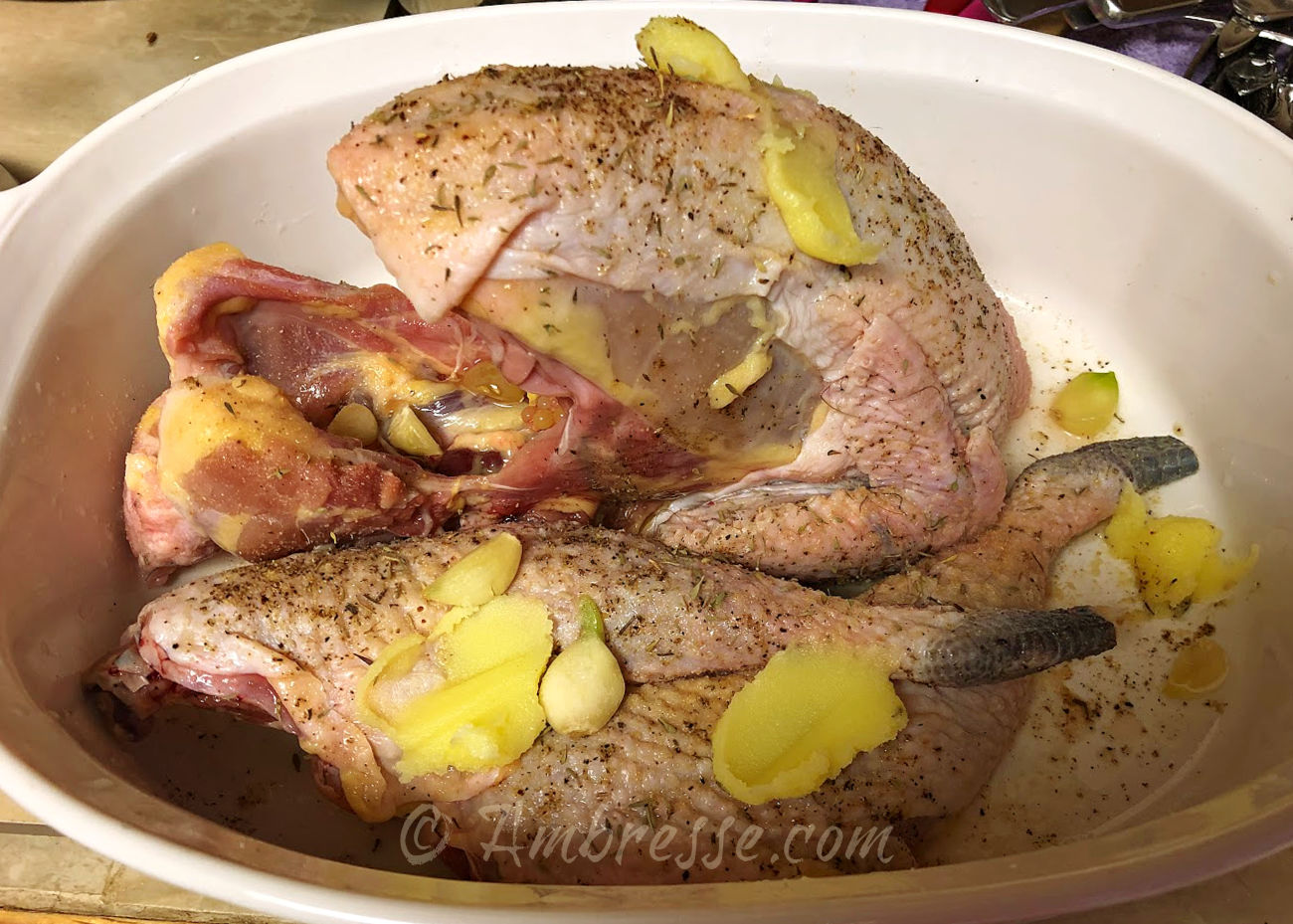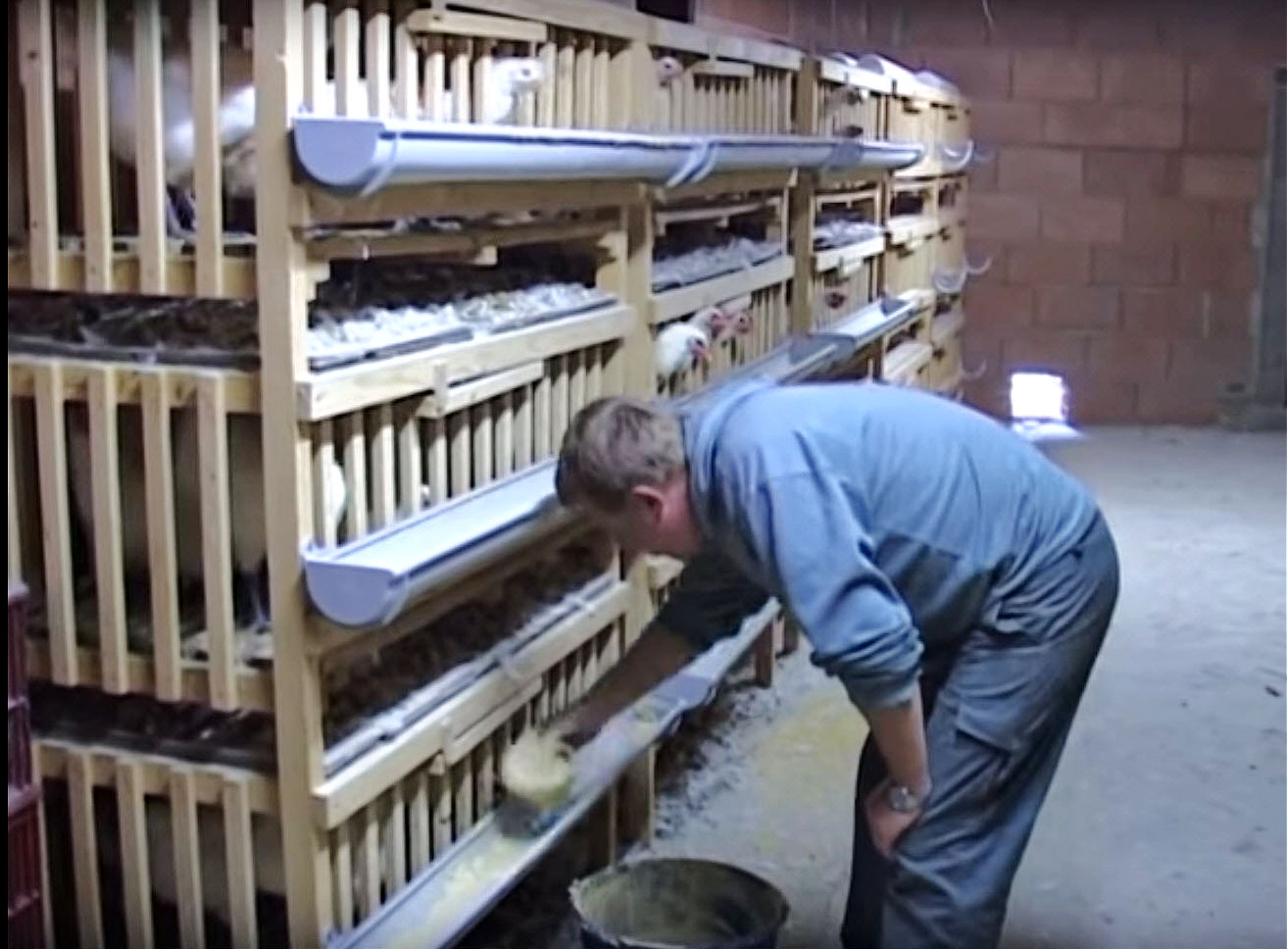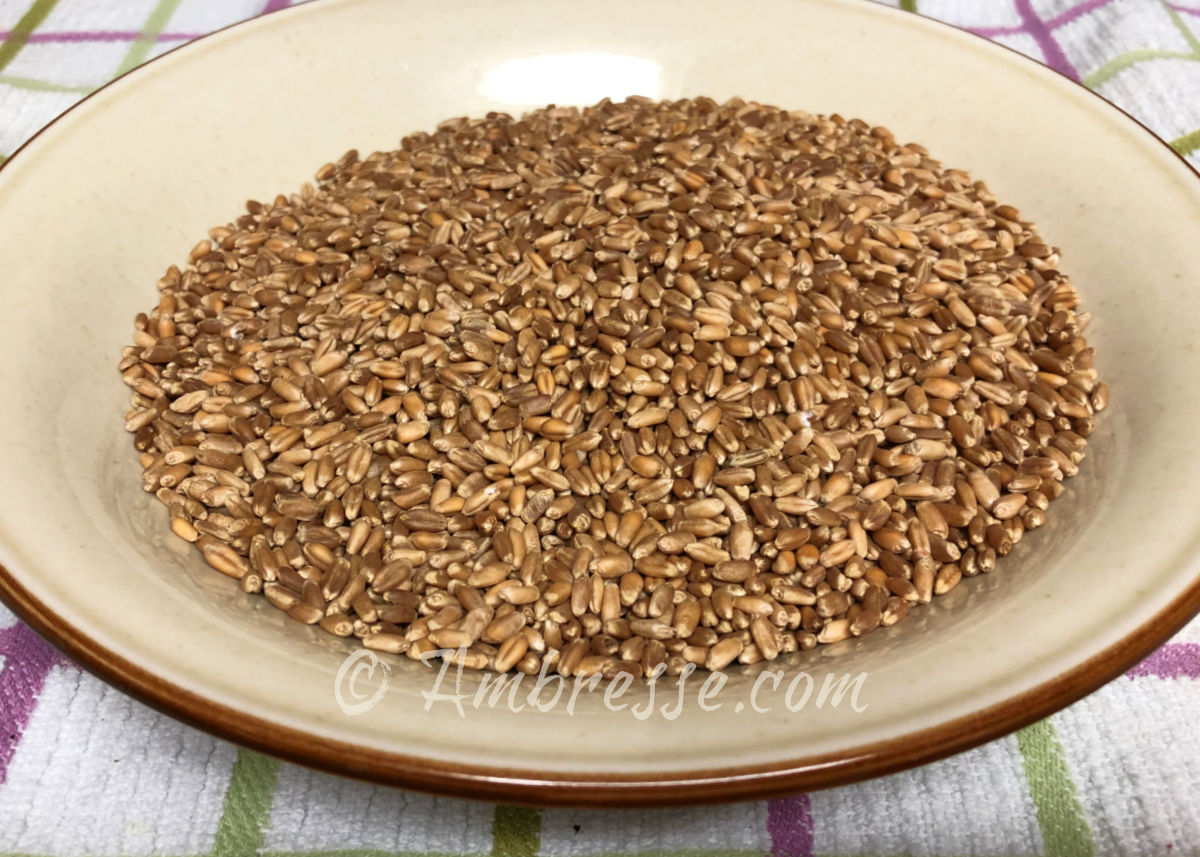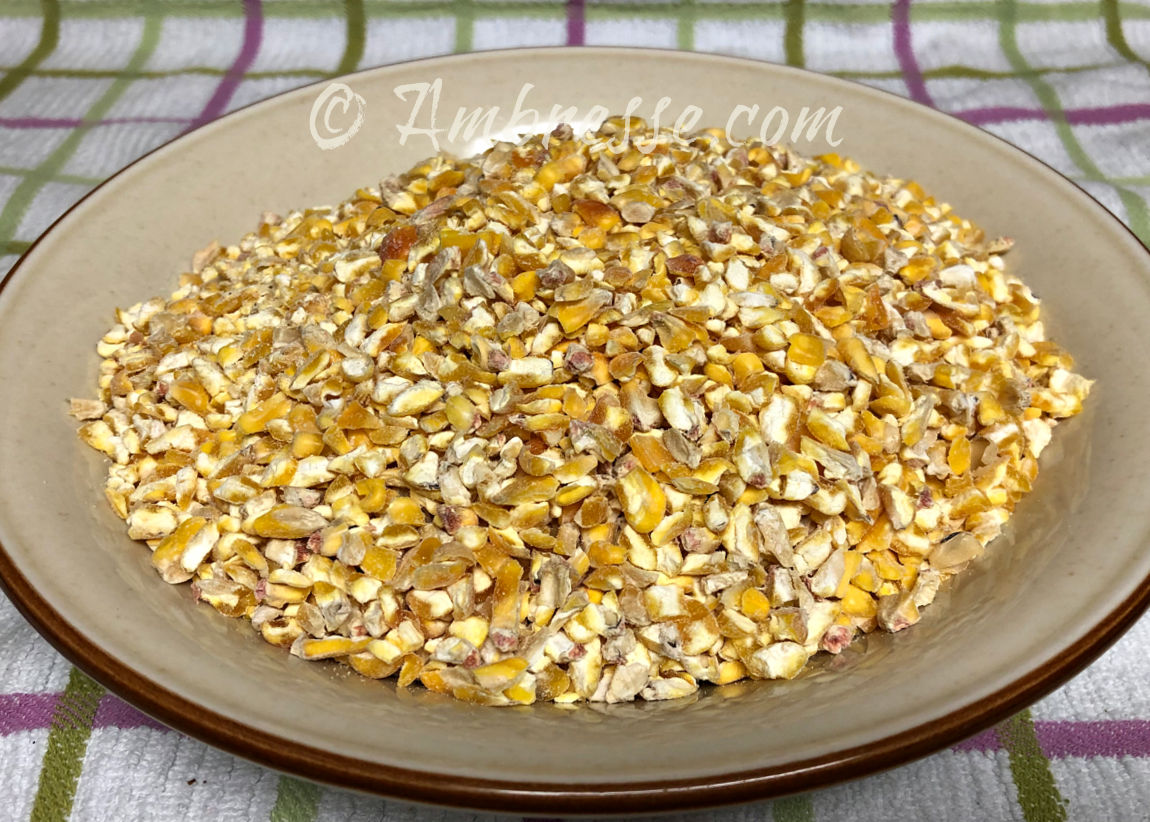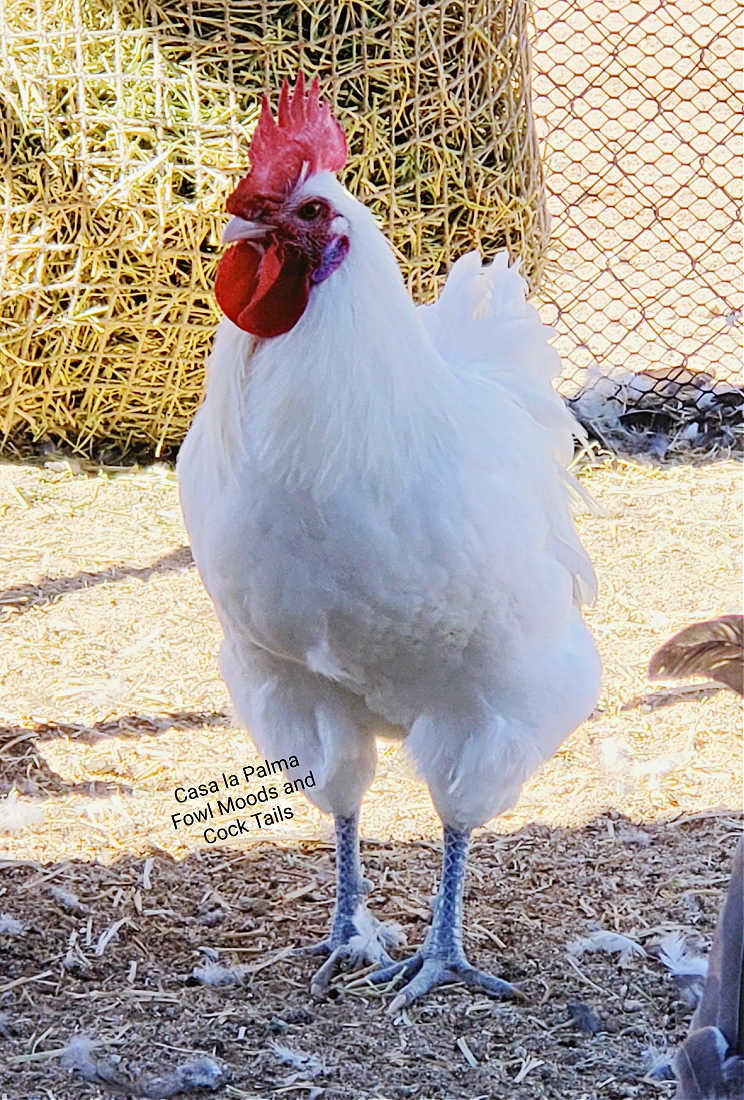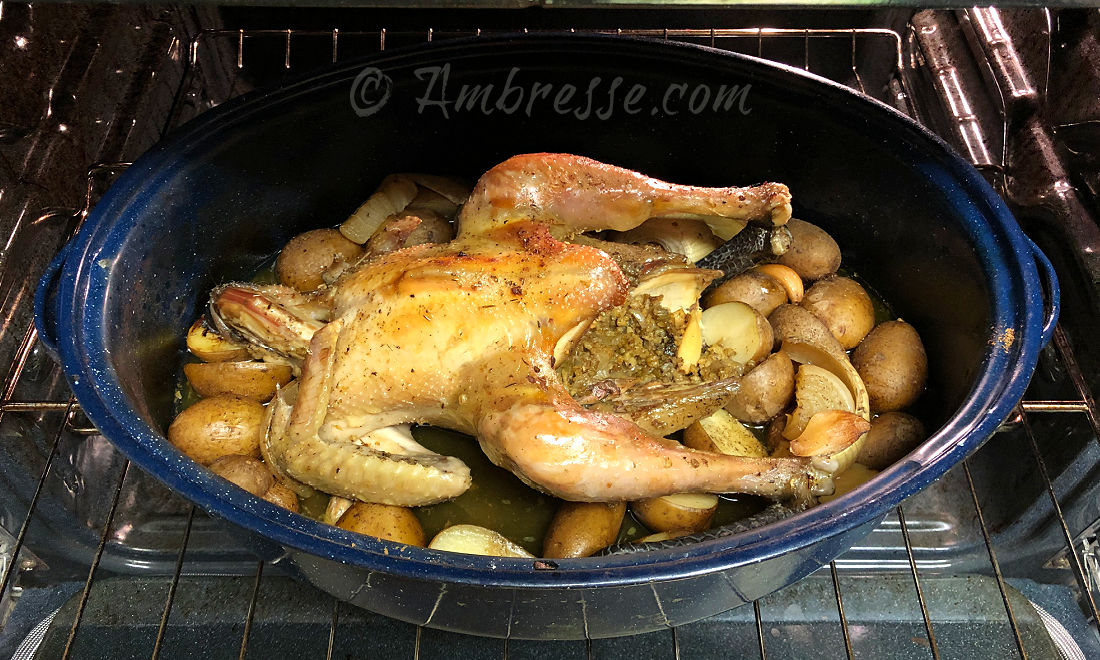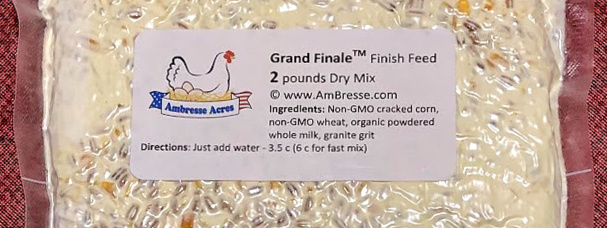American Bresse Finishing FAQs
American Bresse Finishing FAQs: Why Finish? Here are some of the advantages of finishing American Bresse Chickens plus answers to other common or pressing finishing questions.
Is Finishing even a thing?? What IS "finishing"...? Our how-to page about finishing American Bresse Chickens page is here.
No one ever finishes their Cornish Cross meat chickens, so questions may still remain about this extra step, called finishing, which involves a special feeding regimen in preparation for processing American Bresse meat chickens.
Feel free to follow the above link and learn how to finish your ABCs. Keep reading the rest of this page for the answers to your questions about the whole idea of American Bresse finishing.
American Bresse Finishing FAQs
Click on any of these links to skip down to the questions and answers you are most interested in:
- Cornish Cross vs. American Bresse? Why should I raise and finish American Bresse when I can raise Cornish Cross in less than half the time?
- Why Finish? Why Should I Finish American Bresse Meat Chickens?
- Genetics vs. Nutrition, or both? Do Genetics Make a Big Difference to Finishing?
- Am Bresse finishing and non-Bresse breeds? I don't raise American Bresse Chickens - Can finishing improve the meat and flavor of breeds other than Bresse?
- Is fat bad for you? Is it unhealthy to eat finished ABCs?
- Is grain bad for you? Is Grain Finishing unhealthy for humans?
- Effects of testosterone on finishing? Is it a waste of time and money to finish cockerels?
- Are you interested in American Bresse finishing?
1) Why should I raise and finish American Bresse when I can raise Cornish Cross in less than half the time?
Yes, you CAN raise Cornish Cross (CX) in less than half the time. What's not to like about being able to butcher in 6 - 8 weeks flat?? Besides, you never need to finish CX poultry.
After butcher day, you will have zero Cornish Cross left, and your freezer will be filled with mild, tasty chicken that you've raised yourself.
To restock the freezer, you go back to the hatchery and purchase another round of Cornish Cross chicks - as many as you like - and repeat the process. A lot of people are absolutely fine with this repetitive cycle. If you're one of them, great! Keep doing what floats your boat!
But if your goals include even an ounce of self-sufficiency, you'll need to also raise a breed other than an un-reproducible 4-way terminal cross chicken, since self-sufficiency requires a breed that you can keep on reproducing on your own property.
There is NO breed on this planet other than CX that can go from zero to dinner in 42 days, so raising any other breed for meat will always mean taking a hit on the days-to-market parameter. Here are the usual meat chicken breed choices:
- Red Ranger or similar hybrids: 9-11 weeks
- Traditional dual-purpose chicken breeds such as Rhode Island Red or Plymouth Rock: 16+ weeks to market
- American Bresse chickens: 12-18 weeks.
American Bresse is North America's newest dual-purpose chicken breed choice, and its popularity these days is growing exponentially.
2) Is it Worth it to Choose American Bresse to Raise and Finish?
It is worth it to many homesteaders to raise a dual-purpose chicken breed that grows very quickly, and that can be reproduced indefinitely on the ranch for meat and eggs. American Bresse certainly fit this bill.
The extra advantage that American Bresse offer is the magical marbling gene - the genetic ability to marble fat around the muscles and throughout the body instead of just creating giant fat pads inside the carcass. This, plus the intense flavor of the meat and broth is what turns the American Bresse chicken into the poultry version of black angus or wagyu beef. Finishing takes full advantage of the scope of ABC genetics. Is that important to you?
Cornish Cross doesn't really compare, since the flavor of the meat doesn't fully develop until after about week 12 of age. (If you wait too much longer than 8 weeks before butcher, you may start losing some CX birds to sudden death.) Since nearly all commercial chicken sold in both supermarkets and restaurants is CX, with very few exceptions, the mild flavor and soft muscle texture is expected. It is almost like folks today have no idea that there could be so much more to a chicken dinner.
Once one cooks and serves a finished American Bresse Chicken, it is highly likely that one will soon want to enjoy another finished American Bresse.
Grand Finale Finish Feed is a dry mix that reconstitutes into an excellent finishing porridge.
3) Do Genetics Really Make That Big a Difference to Finishing?
The short answer is YES, due to the unique fat-marbling genes. The Bresse breed, including American Bresse, possess a gene or genes and modifying factors that direct fat deposition beyond the usual fat pads at the neck and the rump, and into and around the muscle groups.
This requires a particular multi-gene combination along with modifying factors. The effective combo of gene(s) working together to enable fat-marbling are very uncommon in other breeds, which is why the Bresse breed is world-renowned for its savory succulence.
The point of finishing is to supply enough nutrition so that fat deposition occurs among the muscle groups of the chicken. That is, a well-finished ABC will have the usual fat pads, and also will have additional ribbons of fat in and around the muscles.
The extra fat enhances the flavor, moisture and juiciness, and may even improve the health benefits of the American Bresse chicken.
4) Can finishing improve the meat and flavor of breeds other than Bresse?
That's a fair question and one which I cannot fully answer. But I can share with you my experiences. Any chicken that dines on finishing rations will end up with enhanced nutrition, a bit more muscle mass, and thicker fat stores. This should improve the meat and flavor, even if the chicken in question does not specifically carry fat-marbling genes.
But if you are asking, "Can I obtain 'Bresse' results out of my standard-bred chicken?" I don't know! (My polite way of saying, I doubt it...)
For me, subjectively speaking, there is a wow-factor connected to Bresse meat. It is hard to define, but it was knock-your-socks-off present with the first young finished cock I roasted a few years ago. It is present in the finished ABC cocks that have become standard fare at Ambresse Acres and it was present in a three-year-old black American Bresse hen that I cooked recently. I'll tell you the story below.
The fact that many other breeds lack the extra genetics that deposit the fat within the muscles does NOT mean that finishing will not contribute to an improved and well-nourished meat product. I just cannot quantify that for you.
Try finishing a chicken, letting it rest in the frig for 3-4 days, and then prepare it using your favorite recipe. Let us know what you think.
That's what I did....
Cook-off Between an Easter-Egger and a Black American Bresse at Ambresse Acres
I did an in-house "cook-off" in an effort to answer the question: Can finishing improve the meat and flavor of breeds other than Bresse?
In September 2022, dispatch day arrived for several old Easter-Eggers and a very nice three-year-old black ABC who had already distributed her genetics into our Black American Bresse flock. It was a wonderful opportunity to do a subjective comparison between the carcasses, from looks to taste.
Many aspects of their lives ran parallel, eliminating several variables. Both had lived in the same coop and environment, had eaten finishing rations for 2 weeks, were processed on the same day, were air-cooled, and were rested in the frig for 4 days.
Cooking preparation included oiling the skin with olive oil, and then adding salt, pepper, thyme, ghee, and several garlic cloves. The chickens were roasted in their individual baking bowls side by side in the oven.
Taste Test!
Look at the carcasses above. It is evident by the amounts of the fat lining the breast muscle and the muscling along the keel of the ABC that despite identical treatment and living quarters, the black American Bresse hen had genetics that allowed significantly more muscling and fat layering. Additionally, the thinner skin of the Bresse hen can be detected in the comparative photos.
Cooking was complete at suppertime. The smells were glorious, of course! Between my hub and I, the bresse drumsticks disappeared straightaway. So tasty! Strips of white meat also disappeared. The Easter-egger created no such draw, though we did share some of its dark meat between us.
Bone Broth Soup
The remainder of each bird went into separate dutch ovens with plenty of water, and the cook-off competition moved to the bone broth soup stage. After a day of simmering, the bone broth was complete. I then added all the remaining meat and plenty of onions, carrots, and potatoes to both pots.
Both soups were delicious, for sure!
The American Bresse soup contained only half the meat of the competitor chicken soup, because much more of it was consumed for dinner due to the additional layer of moistness and flavor. The flavor of the soup suffered not a whit. It was intensely delicious.
The Easter-Egger soup was also very delicious, in a standard, chicken-flavor way. Perhaps this was because it was finished, and secondly, because there was lots of meat remaining to add back into the soup, chopped nearly as finely as Old Man Campbell chops it for Campbell's chicken soup.
In my opinion, the American Bresse was the blue ribbon winner for both flavor and moistness, but this is not to say that finishing did not improve the older Easter-Egger hen's carcass. She was older, after all. Let me know how your own cook-offs compare! I'd love to hear your results.
Get Epinette Building Plans!
Epinette for Chickens - Get beautiful PLANS for building French-style wooden-slatted finishing cages with troughs for finishing feed in front of the epinettes. These Epinette Plans were produced through collaboration with Leslee Wooton, who has been breeding and finishing American Bresse chickens since 2011 at Eldervine Farms in North Carolina.
(Photo is a screen grab from https://www.youtube.com/watch?v=iKj8vj8rFHo)
5) Is Fat Bad for You??
Finishing adds fat. Is this a bad thing? Or, perhaps the question is really asking: Maybe I shouldn't be finishing my ABCs and making them even MORE fatty...?
Fat sure gets a bad rap. But the less fat we Americans eat, the fatter and sicker we seem to become. In the midst of a growing epidemic of obesity and declining health which has been ongoing since the mid-1960s, I strongly believe that health matters are not as they have been presented.
See the full discussion about fats here. Spoiler Alert: Refined sugars are heavily implicated in the development of chronic inflammatory diseases, not fats, and we will explain why.
6) Is Grain Finishing Bad for You?
When I purchase beef, I purchase it grass-fed, meaning not finished with grains. This is because cows are pure herbivores; their bodies are designed to eat nothing but very high fiber plants and grasses/hays. The high-fiber forage works its way through 4 stomachs, and the cow needs to chew its cud to boost the process. Grass-finished beef is every bit as healthy (anti-inflammatory) as is wild salmon.
Graining-finishing for cows is not a natural diet for cows.
The unnatural feeding protocol disrupts the balance of omega fatty acids in the beef. Grain finishing changes the balance of omega fatty acids in the meat from anti-inflammatory (omega-3s) to pro-inflammatory (omega-6s and -9s).
Does grain finishing make American Bresse chickens unhealthy to eat?
The short answer is no, and here's why.
Chickens don't live solely on grasses as cows do. It would be nearly impossible for chickens to survive, much less lay eggs or build muscle, on a "solely grass-fed" diet, because chickens have an entirely different gastrointestinal tract than that of herbivore cows.
And in fact, chicken keepers already feed their birds grains every day. Normal daily chicken feed, both for chicks and for the flock, is already comprised of up to 85% grains.
Grains are NORMAL food for omnivore chickens. A normal day in the life of a domestic pasture-raised chicken involves their grain-heavy feed AND a lot of foraging for all kinds of extra deliciousness. Menu items on a normal healthy chicken diet are:
- Bugs
- Seeds
- Grains
- Grasses
- Roots
- Insects
- Unwary rodents (I've watched chickens bicker over a mouse.)
This is why chickens earn the category of "omnivore." Eating this nutritional variety greatly enhances chicken health, which provides a wealth of nutrients in their eggs. When an animal eats a diet that it is designed to eat, its health will be positively affected. This why I am not bothered about American Bresse finishing with grains and whole milk.
It would be worthwhile to see a truly scientific study of the actual nutritional results of American Bresse finishing, versus unfinished chicken carcasses, but until then, I plan to keep on doing American Bresse finishing of chickens for market.
7) What about the Effects of Testosterone on American Bresse Finishing?
In France, many Bresse cockerels are caponized and allowed to grow and forage for months before finishing and processing in time for year-end holidays. Fatty capons are highly prized, and bring premium prices.
But some cockerels are finished. Those cockerels that are finished are processed at age 16 weeks. The reason for butchering by 16 weeks is in order to process before testosterone levels peak in the cock's body.
Testosterone has at least two affects on cockerels.
First, testosterone boosts energy output. It is the driving force that turns young cockerels into macho roosters. Roosters have to do all the rooster-y things such as breed the girls, protect the flock from predators, and find all the tidbitty morsels of joy. All that extra activity and energy burns some of the fat that you were hoping Mr. Roo would gain.
Secondly, testosterone has a metabolic effect that inhibits fat deposition. Higher testosterone levels typically result in increased muscle mass and lower body fat levels. You've seen photos of bodybuilders - not a fat cell in sight and every muscle group clearly defined. This is not what the ABC breeder is looking for when finishing their market birds.
By week 18, cockerels will have begun their entry into puberty, and testosterone levels will be unmistakably rising.
So, is it a waste of perfectly good corn, wheat, and milk to finish 18- or 20-week-old (or older) cockerels?
Maybe. But maybe not. There is certainly an obvious way to minimize the effects of testosterone: Finish and process cockerels before testosterone levels assert themselves too strongly.
Cockerel finishing in France commences at the end of week 14. The finishing protocol lasts 8 days for cockerels, so the cockerels are processed at or around 16 weeks. This is also how we at Ambresse Acres like to manage our meat cockerels.
Some ABC breeders choose to process at week 18 or 20. Some actually prefer to process beyond 20 weeks. Yes, testosterone levels are continuing to rise during this time. This will “spend” some of the dietary fat, probably resulting in a minor lag in fat deposition.
By targeting 16-18 weeks of age for processing, cockerels can layer on the fat for 2-3 weeks before the major rush of testosterone has a chance to negatively affect the dietary benefits. And if you wish to process after about week 18, try a finishing regimen for two weeks instead of one.
My finished cockerels look beautiful and taste wonderful at week 16. I recognize that a cockerel may not finish with optimal efficiency, but barring the ability to caponize, finished 16-week-old cockerels are very welcome at our dinner table.
8) Finish your American Bresse meat birds
Give your American Bresse chickens a Grand Finale! Make your own finishing feed by following our comprehensive Grand Finale Feed Recipe Card - click the pic or the link to learn more!
The full information on finishing American Bresse chickens is here.
Or if you prefer, we can help you with your American Bresse finishing. Grand Finale Finish Feed, offered by Ambresse Acres, closely matches the finish feed fed by French Bresse breeders.
Click the pic or the link to learn more. We make it fresh when ordered, so expect delivery in a week or two.

This concludes our American Bresse Finishing FAQs. If you have additional questions, please feel free to drop us a note!
- Home
- American Bresse Chickens
- Finishing American Bresse Chickens
- American Bresse Finishing
References for American Bresse Finishing FAQs:
- https://www.linkedin.com/pulse/100-years-sugar-consumption-when-did-become-too-much-sitwell
- https://www.npr.org/sections/thetwo-way/2016/09/13/493739074/50-years-ago-sugar-industry-quietly-paid-scientists-to-point-blame-at-fat
- https://www.nbcnews.com/better/diet-fitness/sugary-drinks-may-kill-184-000-people-each-year-says-n384026
- https://www.npr.org/sections/13.7/2013/08/23/214440426/obesity-and-the-toxic-sugar-wars
- https://jamanetwork.com/journals/jamainternalmedicine/article-abstract/2548255
- https://pubmed.ncbi.nlm.nih.gov/22495883/
- https://pubmed.ncbi.nlm.nih.gov/33307216/
- https://www.medbroadcast.com/channel/nutrition/diets-and-specific-foods/pasture-raised-vs-free-range-and-grain-fed
- https://www.researchgate.net/publication/262156879_Concentration_of_testosterone_in_blood_serum_in_roosters_of_the_Polbar_breed_depending_on_age
- https://www.metabolismjournal.com/article/S0026-0495(01)56546-4/pdf
- https://www.motherearthnews.com/real-food/free-range-eggs-zmaz07onzgoe
- https://www.fireflymeadowsfarm.com/100-grass-fed-chickens/
- https://cairncrestfarm.com/grass-fed-guide/grass-fed-chicken/
- https://www.chickenfarmers.ca/the-wheel-of-chicken-understanding-your-choices/
- https://www.pacificnorthwesthomestead.com/blog/processing-my-first-american-bresse
- https://www.timesunion.com/tablehopping/article/Table-Hopping-Eating-a-56-chicken-17499488.php
Overheard...
Tasty Recipe! "I processed my first batch of Bresse... Today I roasted one according (somewhat) to the recipe posted on Ambresse. It was delicious! Tender, moist and succulent... So happy I chose this breed!" (B.E., MN, 12/11/2024).
Success: "I can't believe all the inquiries we get through your website. And it's been a great resource to send people to who are interested in the (AB) breed" (Utangard Farm, NH, 5/5/2025).
Informational: "Your site has the first accurate information about American Bresse chickens that I have seen in English. Thanks for your diligent work" (L. Wooton, NC, 12/17/2024).
Translate This Page
Traduire Cette Page
Traduzca Esta Pagina

News
American Bresse Breed Club web pages can be found under the Breed Club tab on the navigation bar. Any changes in Club status will be posted here!
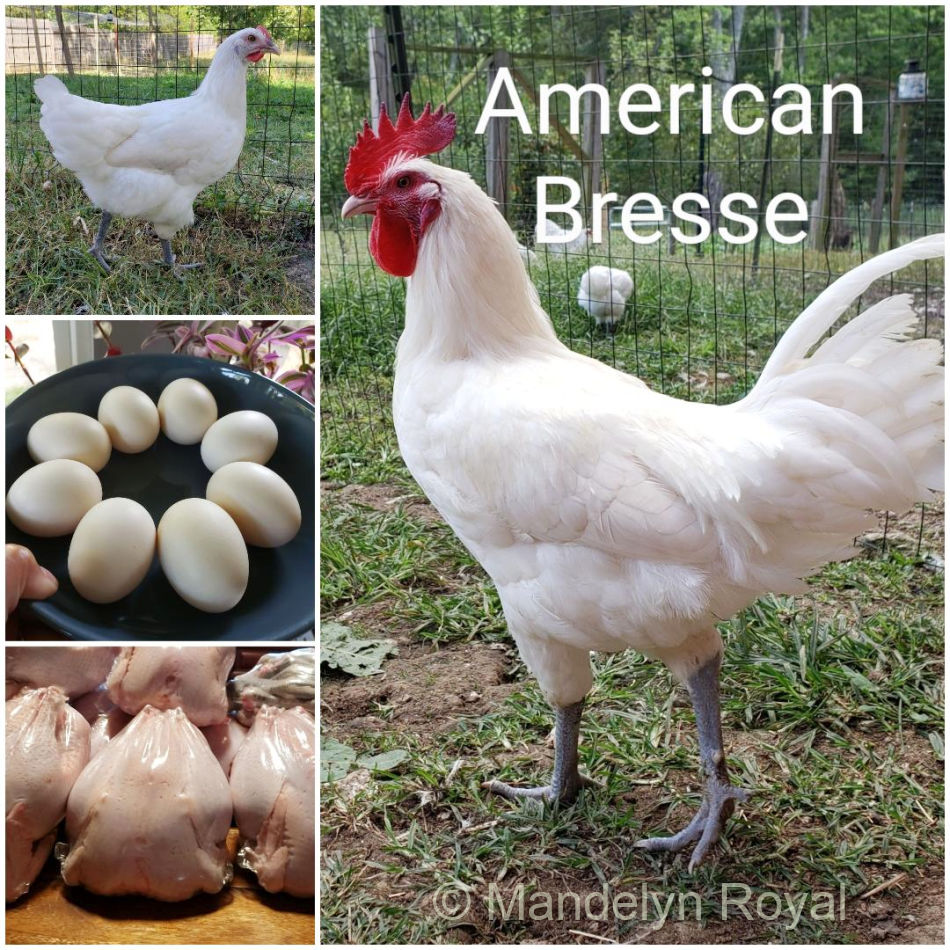
Photo credit: Mandelyn Royal.
